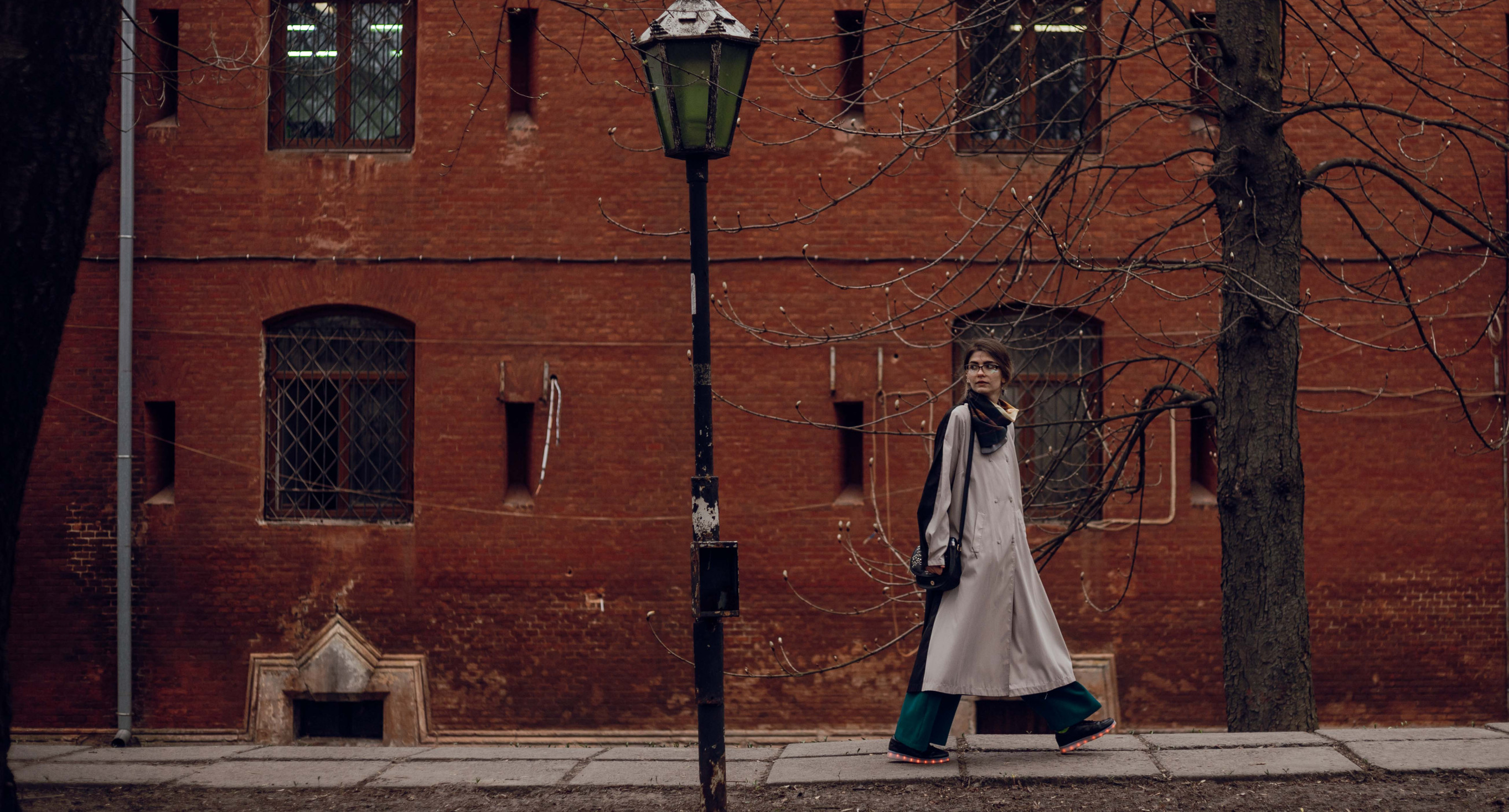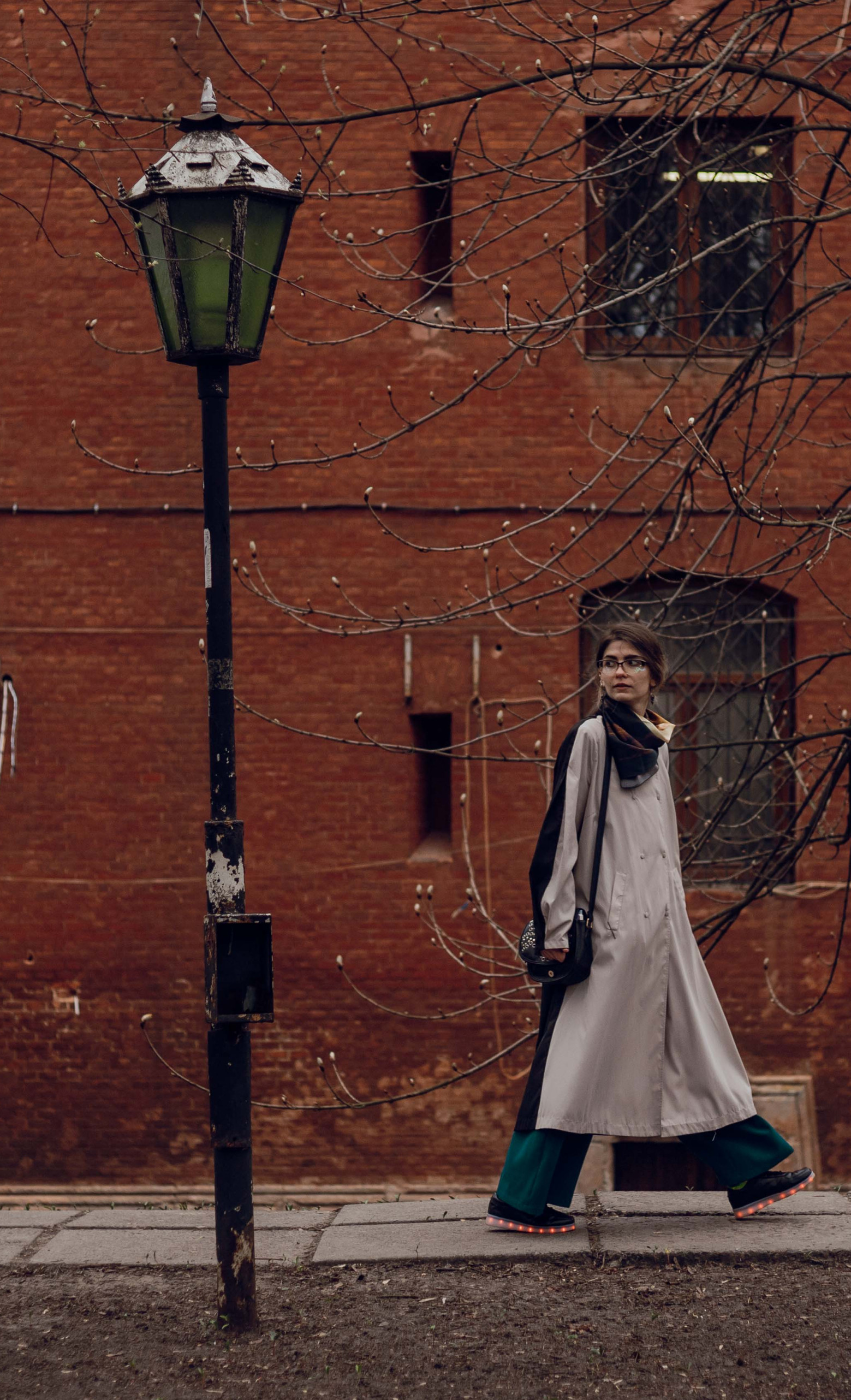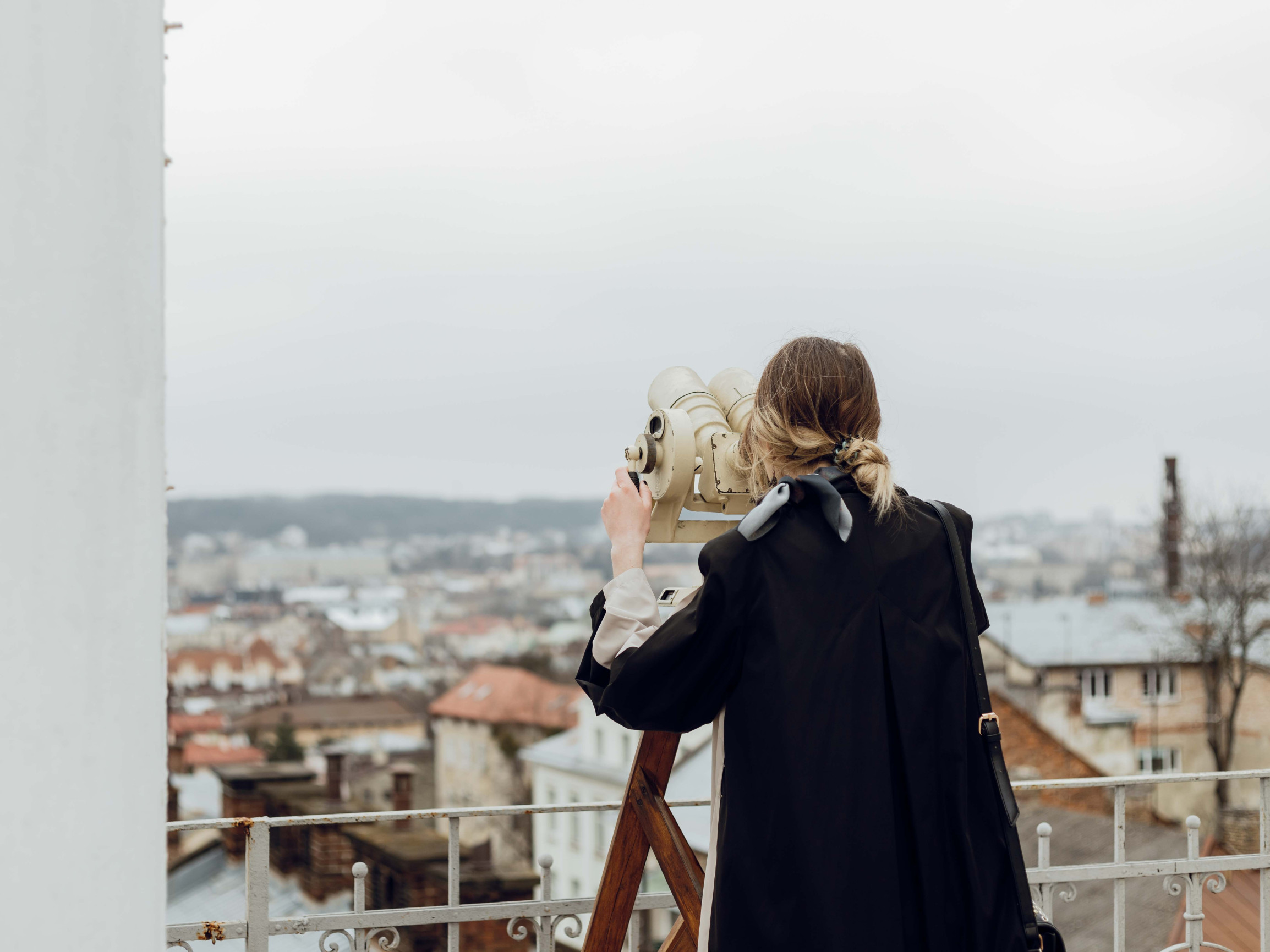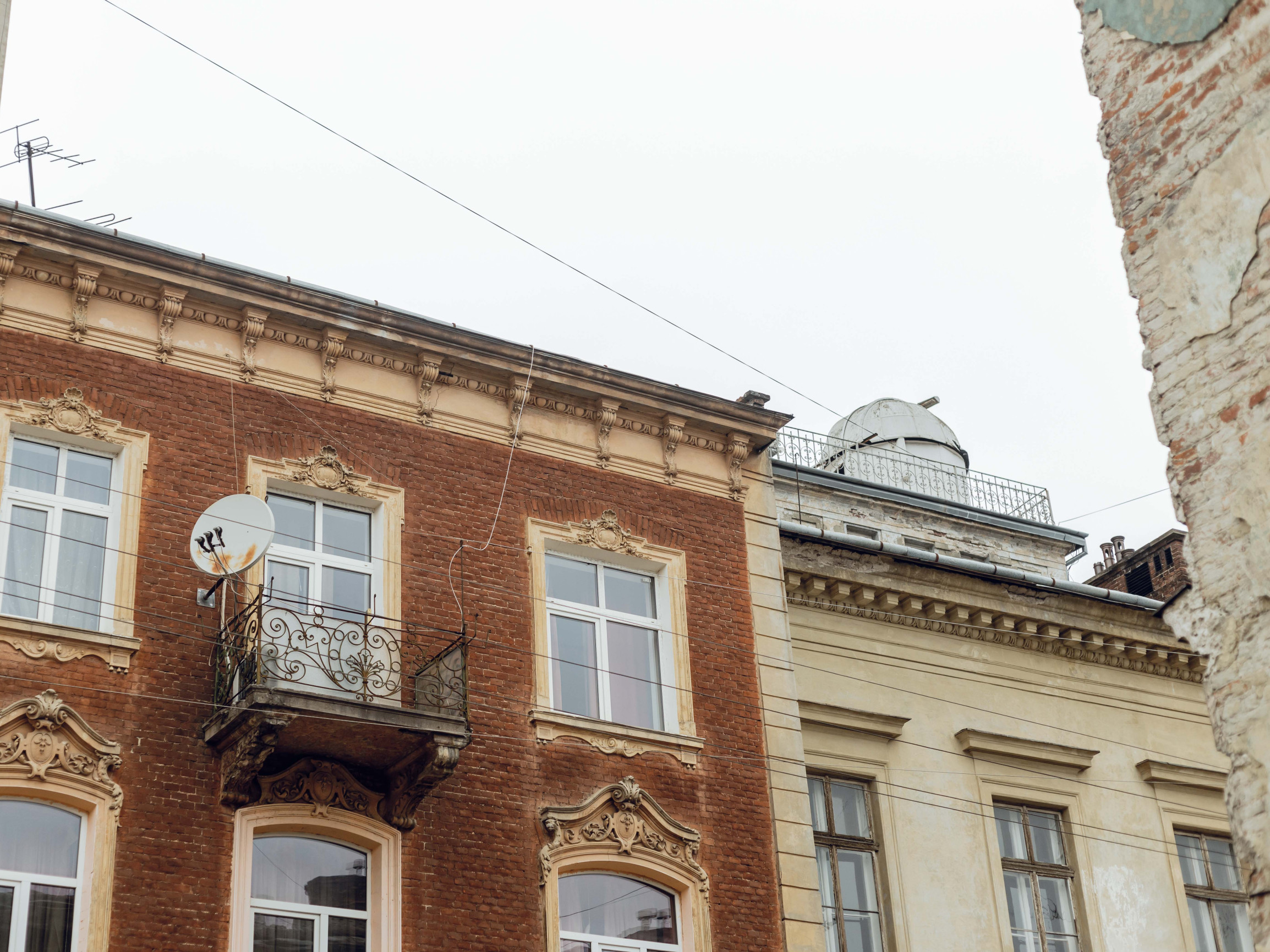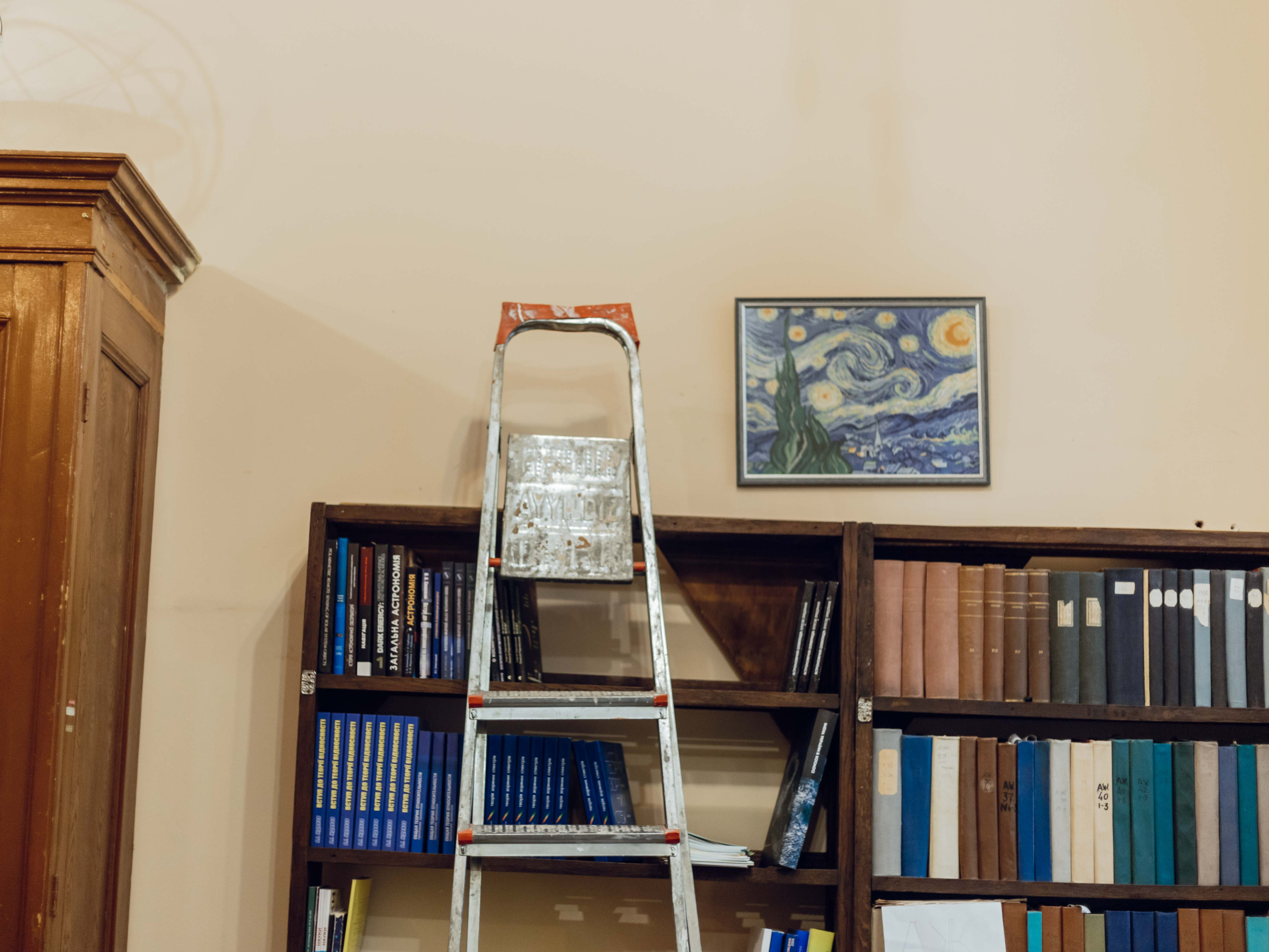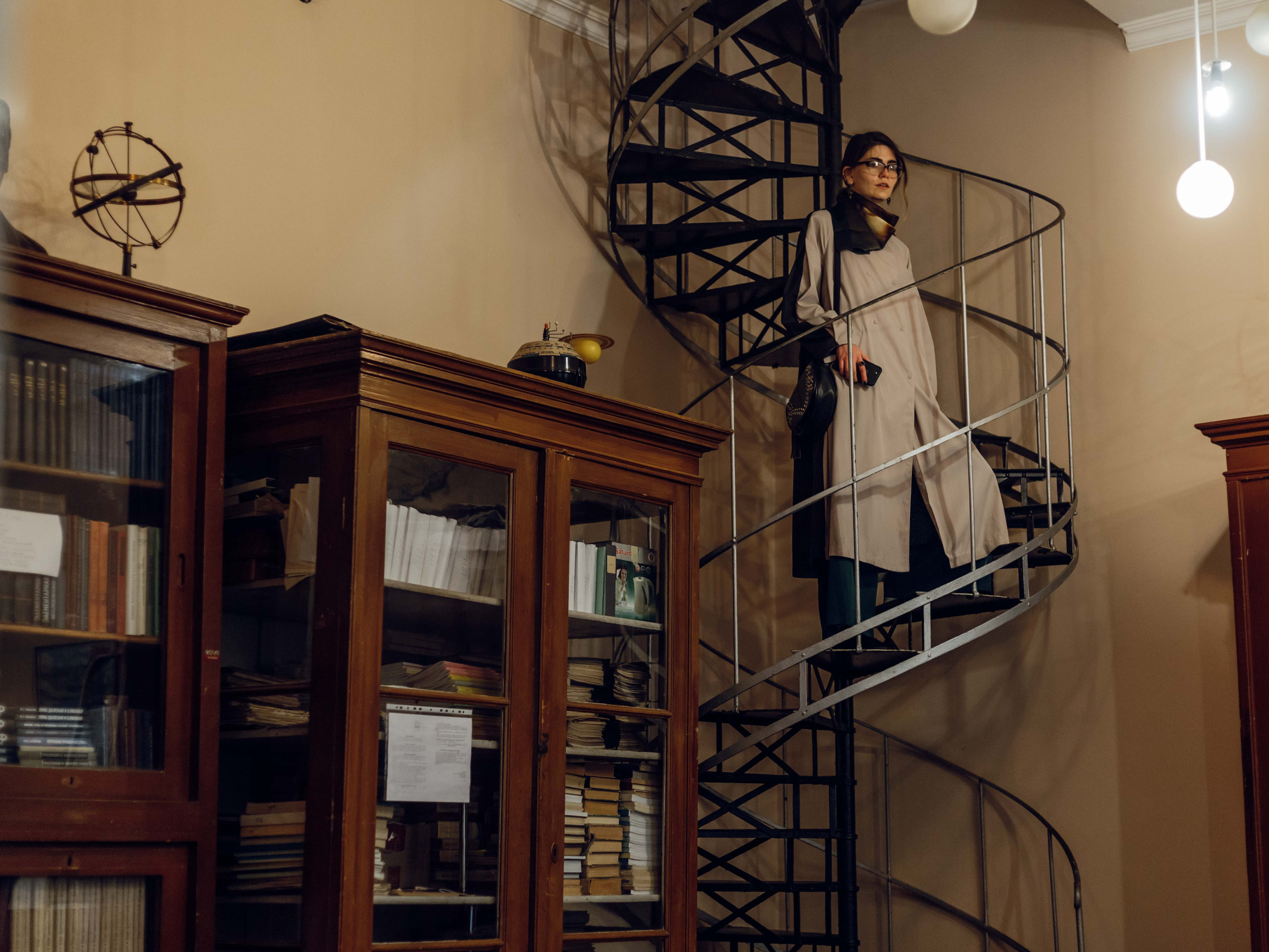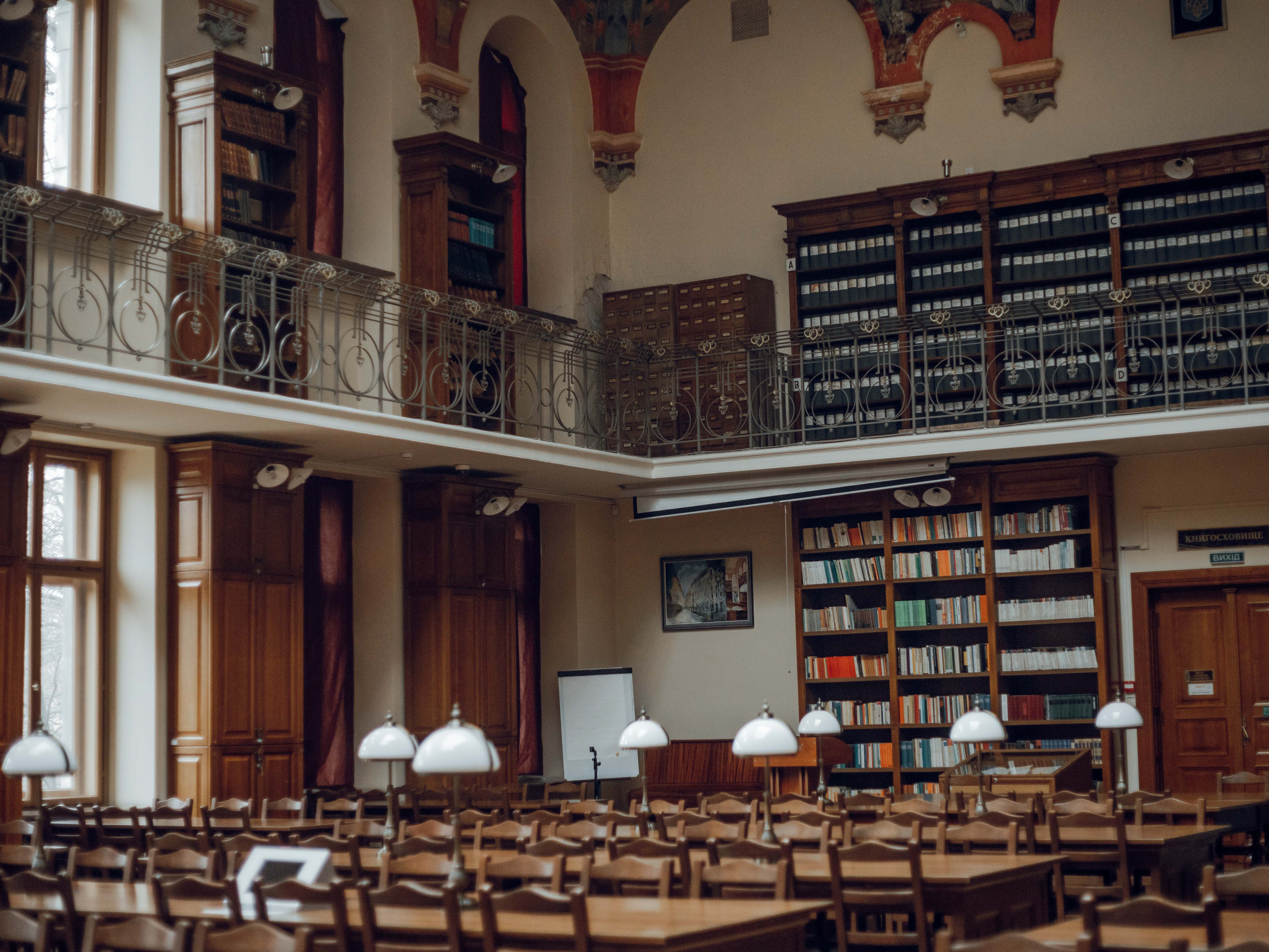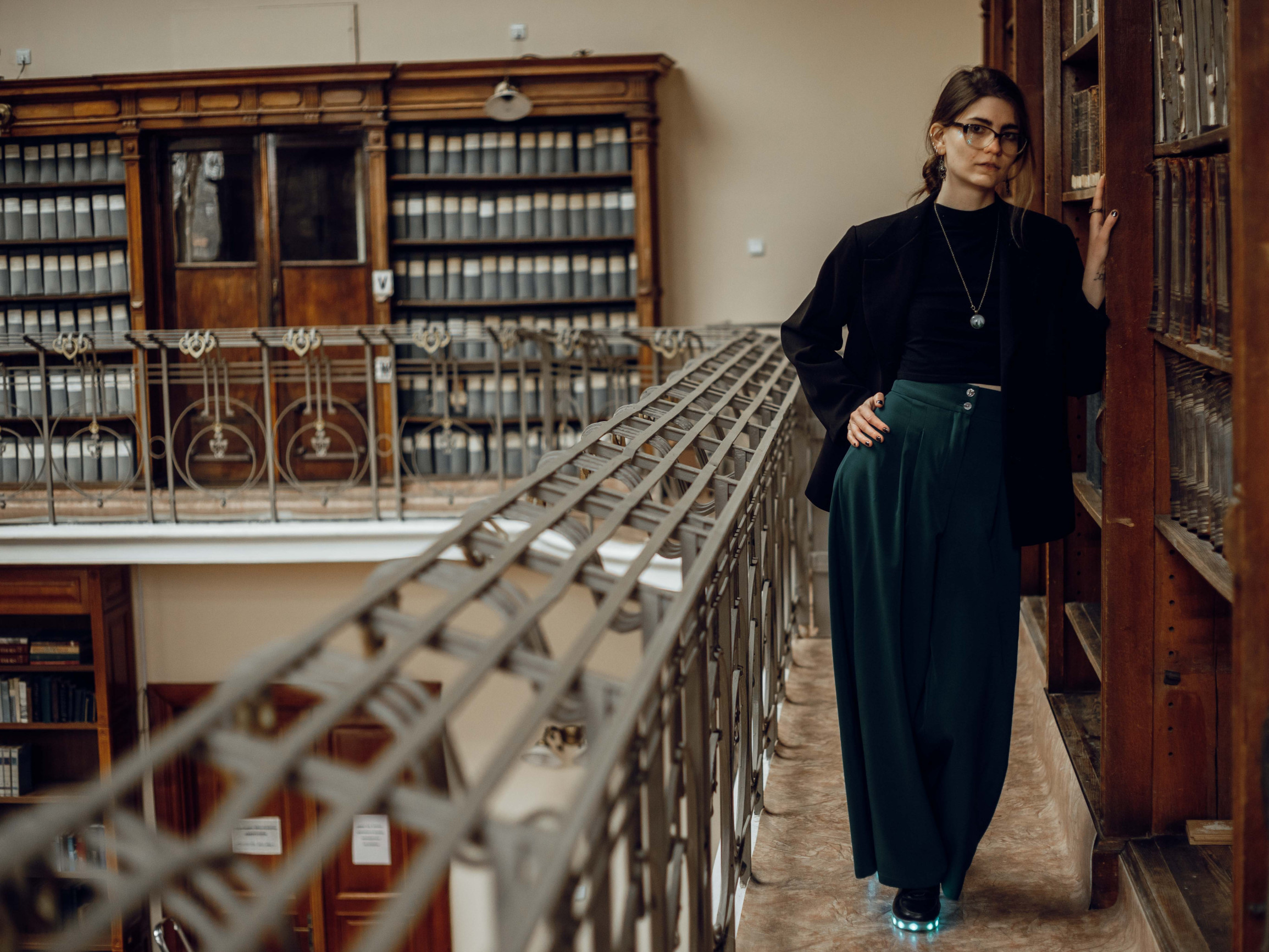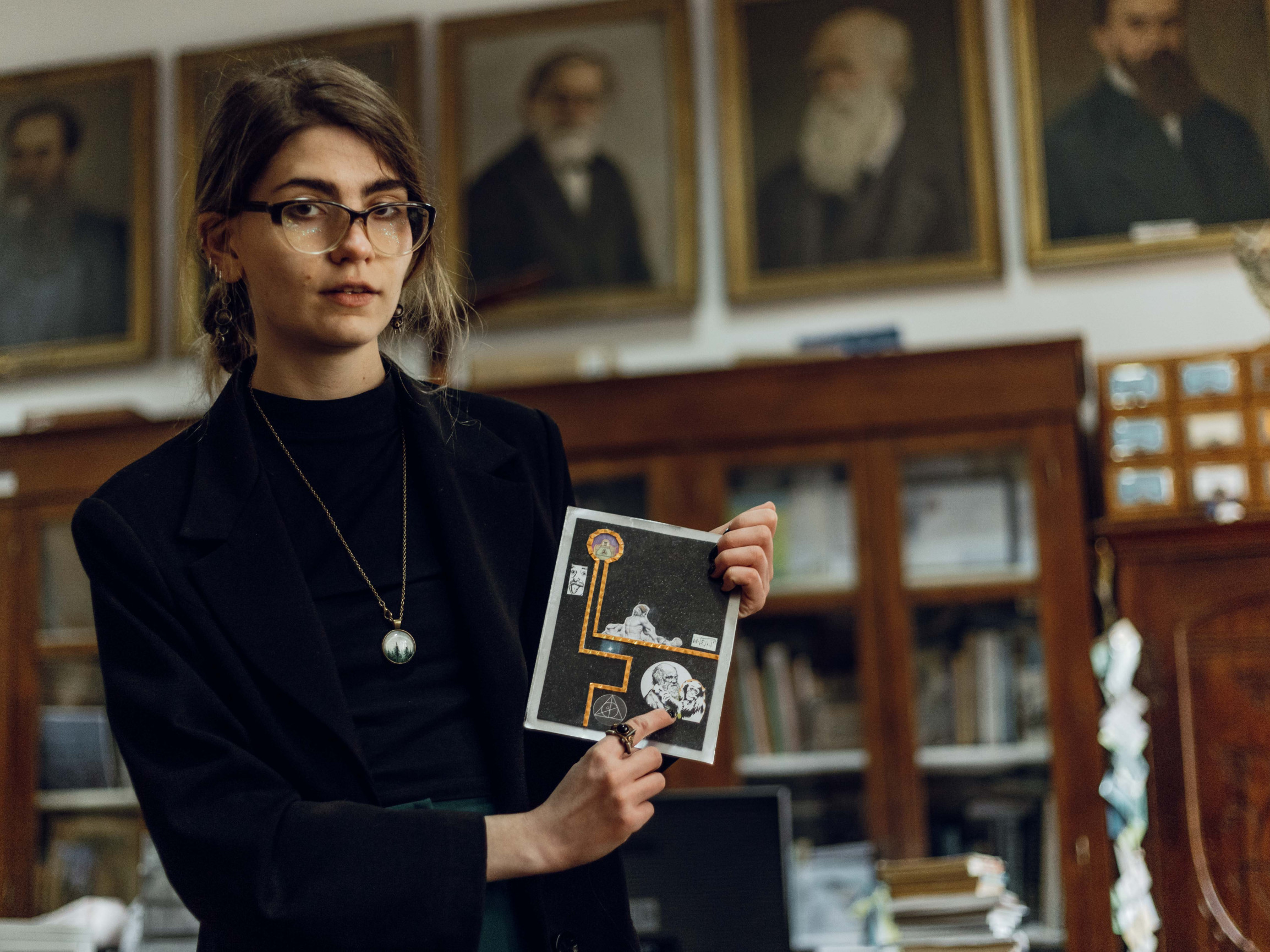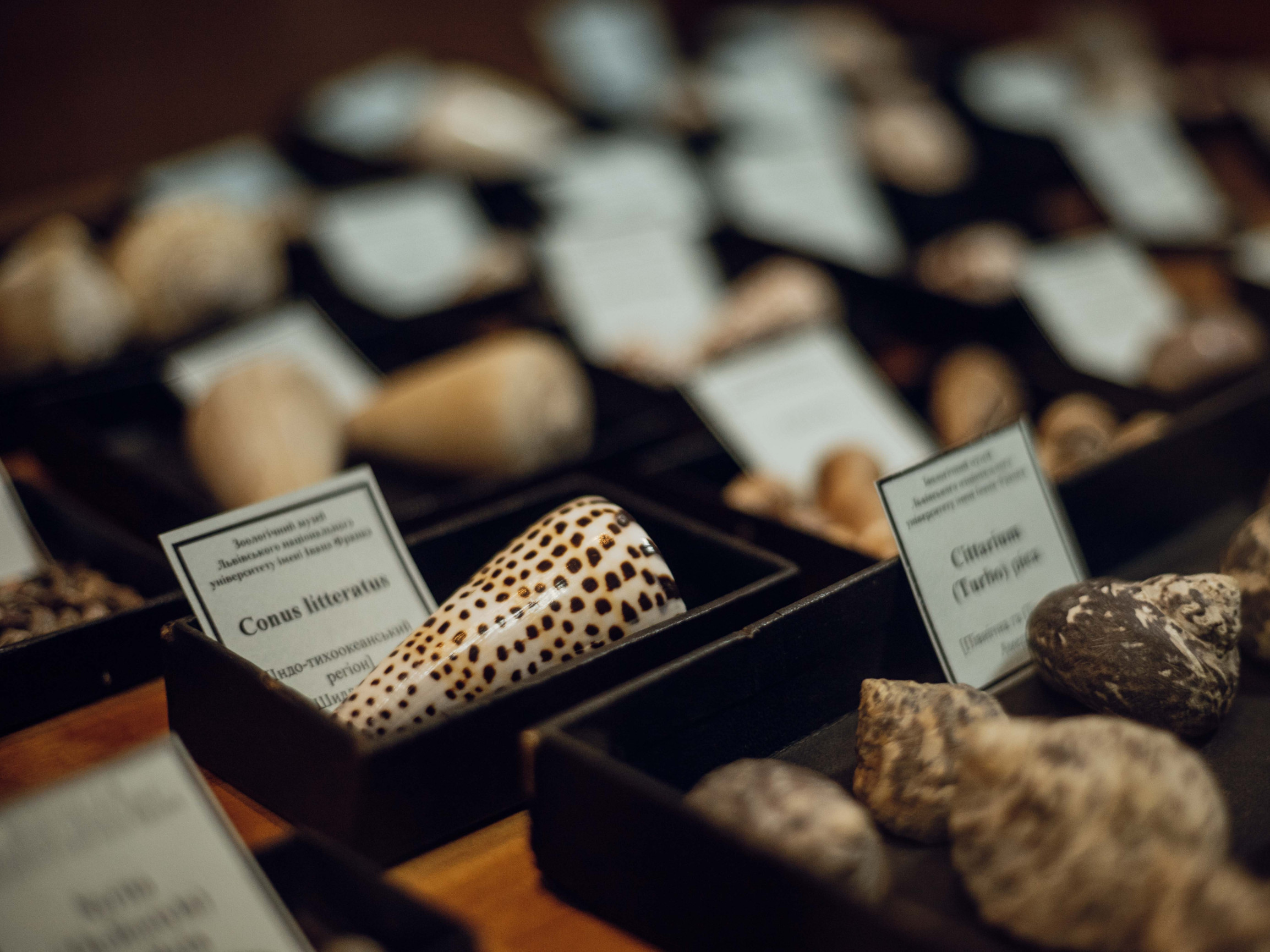Oksana Broshnivska or Bro is a journalist and artist. She writes about science and technology and illustrates articles and stories with her paintings and photographs of miniatures from her own collection. With our heroine, we will open the curtain of the wonderful world of Lviv science. Let's remember the Lviv Mathematical School, the first local programmers, and let's not forget about today's scientists. Where in Lviv to look at the stars? Where to look for manatees? What is Albert Einstein here for? Turn on the retrowave in the background and follow the shimmer of Oksana's sneakers – we’re off!

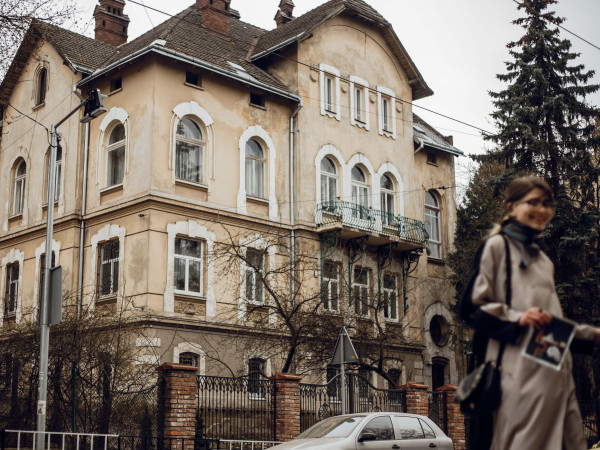
Stop I. Banach: house and paradox
I often walk down this street because the nearest Nova Poshta is here. I like to order various things: clothes, books, gifts, miniatures. I have a miniature house at a scale of 1:12 at home – I come to pick up new miniatures, unpack them to see if everything is okay, and Nova Poshta employees make up my psychological portrait and think about what is happening. In addition to the fact that I have some mission on this street, also some context here crashes into me and makes its adjustments to my thinking. You can extract that context from different elements – depending on what the brains are trained for, and what the memory clings to.
For me, this area is very full of scientific vibes. In particular, this house: we can proudly say that a man who is known to the whole world, Stefan Banach, lived here. I'll just say that he is a great mathematician and the founder of functional analysis, well, one of them. If you want to hear something very interesting about Banach, there is such an American promoter of science Michael Visos. He once spoke of the Banach-Tarski paradox. This thing is mind-blowing. The paradox is that we can split a three-dimensional ball into two identical copies.
My boyfriend and I had a tangerine. I ate mine, started looking at his tangerine, and somehow, it happened that I already started peeling it… I split it in half and tried to connect the ends of each half so that there were two separate tangerines with the same radius. Therefore, I gave him half a tangerine and ate half myself. I explained that this is the Banach-Tarski paradox in action.
I think the environment that surrounds us, including the architectural or historical context, strongly influences our thoughts or even jokes. Now we will go to Cyril and Methodius St. – this is one of my favorites since I have lived nearby.
Address: 11 Svientsitskoho St.
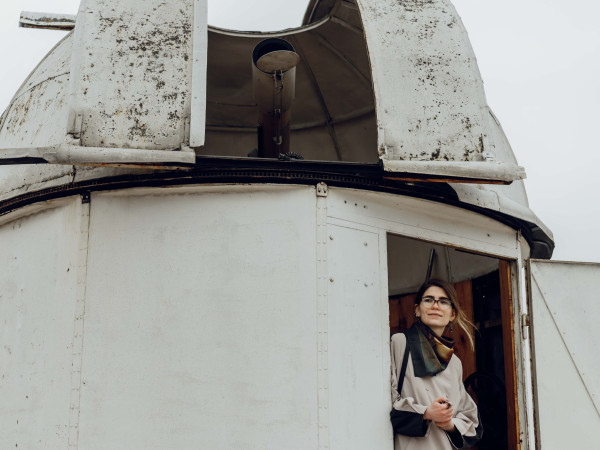
Stop II. Astronomical Observatory on Cyril and Methodius St.
Wise thoughts come to my mind on this street. Until I go out on Hrushevsky St. and meet the dumpsters overall sidewalk, then I start swearing. Here, on Cyril and Methodius St., I often go out in the middle of the working day, especially when it becomes difficult to write. Then I have to walk, breathe fresh air, and stare at people, of course. As for wise thoughts, I have a few hypotheses as to where they come from. First, there are the academic institution, the physics and chemistry departments of the university, and I think that the architects who designed such buildings had to know some secrets of how to convey this academic charm in order to want to walk with a serious face and think about serious things. In addition, there was a period when I came here every week for work-related training, so I still have some personal memories of these buildings.
I want to take you to a yard that I discovered relatively recently. This is a backyard with a secret, which is exactly what I want to tell you. If you go deep into it, you can see the dome of the observatory. As far as I know, there is the oldest telescope there. It was brought here after World War I. Moreover, during World War II, when Soviet troops came here, the Germans wanted the telescope sent to the Reich. I'm not a tour guide or a historian, but I remember that. Dr. Rybka worked here, who decided to hide the telescope in the basement and his acquaintances, the railwaymen, helped him to forge documents to make it look as if he had sent everything. During the war, in the general chaos, the disappearance of astronomical equipment was not considered suspicious. You think why I'm so wise – I read it all from Lviv scientists who published a two-volume "Leopolis Scientifica" at the end of last year. It was published in a small edition, but it is a very interesting work, in fact, this scientific Lviv is described in a way I have never met before, and is illustrated with a bunch of archival photos. You can now find it at our city libraries.
Regarding the observatory itself. I was there for the first time when my colleague from our "15x4" scientific clubbing, Myroslav Kashebochka, invited me. He invited me to a lecture by Bohdan Melekh about the life of the star. He spoke of its development from birth to the moment when it could end its existence. I was very impressed by how much the lecturer himself was interested in a topic that he had probably covered a million times. It's one of those stories when you sit and envy students who can listen to it every day. After that, another very cool astronomer, Sviatoslav Smerechynsky, took us to show the observatory. That was the first time I saw her. My last time at the observatory was last year when we were looking at Comet Neowise. That's all, in fact: there were only the first and last time – there were none between them. I hope that we will be let in for the third time now because it is a very cool place.
Address: 8 Cyril and Methodius St.
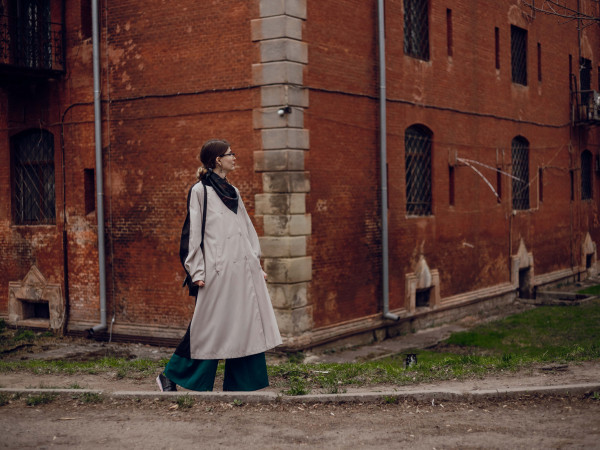
Stop III. The first programmers
While I am taking you to make a time loop on the citadel, I also want to draw your attention to this house. This is the Academic House; today here is one of the buildings of the Academy of Printing. Why I pasted Einstein here on my collage map: well, firstly, I used stickers that were at home, and secondly, it makes some sense. It housed the center of the Shevchenko Scientific Society, and Einstein was officially one of its members. Besides, this building was one of the buildings of the Secret University for some time, which has its own history of struggle for the right of Ukrainians to receive an education. I also read about this in that two-volume book.
The citadel is a place where it's great to walk around. In addition, it is very close to my house, so I come here sometimes. I just don't think about something very wise here anymore, but just about life. In the eighties, by the way, there was a Research Institute of Informatics here. We once published an article on Lviv.com with photos of the blogger showing large electronic computing devices in these premises. In short, it was like the beginnings of the IT industry in Lviv. Sometimes I also write about this industry and draw different comics on behalf of a two-dimensional robot who jokes the same flat jokes as he himself.
While we are walking here with you in the eighties, you can start in your head some kind of synthpop track that will come to mind. And I will change the color of my slippers for you to match the environment.
Address: 12 Hrabovskoho St.

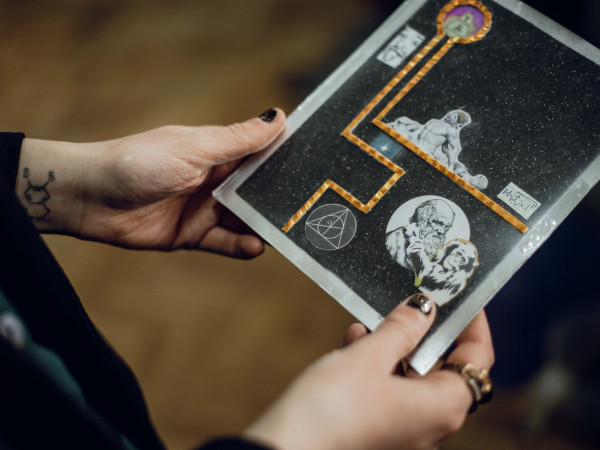
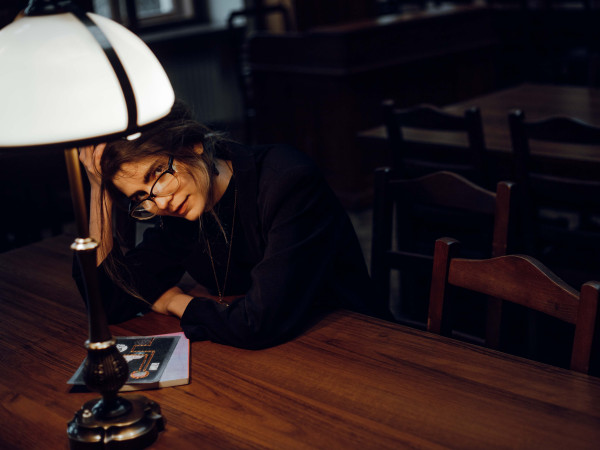
Between stops. LNU Library
All I can say as we walk into the library is to lose consciousness, fall, hold on to my forehead, and shout that I'm going crazy now. I wanted to come here for a long time, so you made me a very cool gift by bringing me here.
Address: 5 Drahomanova St.
I marked the Sheptytsky Museum on a map because it also had some significance at the time in the context of the Secret University and the Shevchenko Scientific Society. But I don't remember why, so I'll just say I like him.
More about the museum in the route of Christina Boyko at the link.
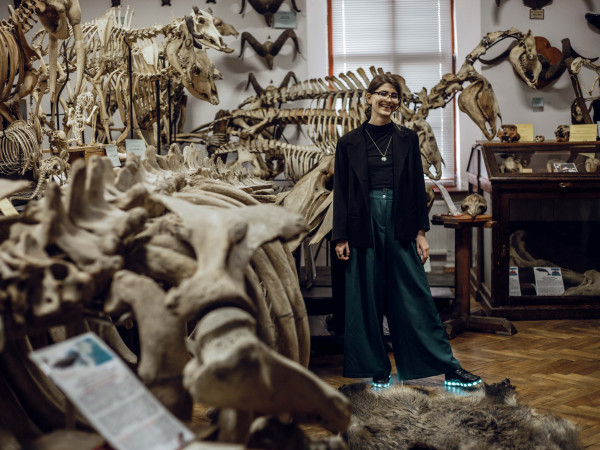
Stop IV. Zoological Museum
I used Darwin to mark the zoological museum on my map. I remember once coming here alone because I knew the museum was open. The first thing I saw was Darwin winking at me from that door. I remember walking through all these halls. There was no one in the museum at all; it was during the study, except for the students walking through the corridors. Because it was very quiet here, I felt a bit like a hooligan, as if I had infiltrated someone else's territory. When I heard some steps later, I realized that there was someone in the next room, but I was so involved in the role that I decided not to show myself to anyone. I like to be in such places alone to have more space for imagination, to look, and only then to read the history of these places.
Here, the coolest character in this whole context is Dybowski, who founded this museum. He was sentenced to death for participating in an uprising, but because he was a brilliant biologist, geographer, and physician, and colleagues asked for him, the punishment was changed to 12 years in exile in a village near Lake Baikal, where he continued his work. There are exhibits brought from there.
In general, I remember once having such a trip to the museums of Lviv. They seem to be museums in museums, because they themselves resemble exhibits, I really like them. I felt like the hero of a game. As a child, I loved quests; among them was the "Syberia". The heroine's journey stretched across Europe and then reached the mysterious island of Syberia, where mammoths lived. My journey went through various museums, including the one we just visited, and the Archaeological Museum at Franko University, where the head of the department, Yaroslav Pohoralsky, let me hold a mammoth tooth. Then I realized that this is all, I'm close - I'm holding a mammoth tooth! Then, after a while, an exhibition with a mammoth was finally opened at the Teatralna St.
Address: 4 Hrushevskoho St.
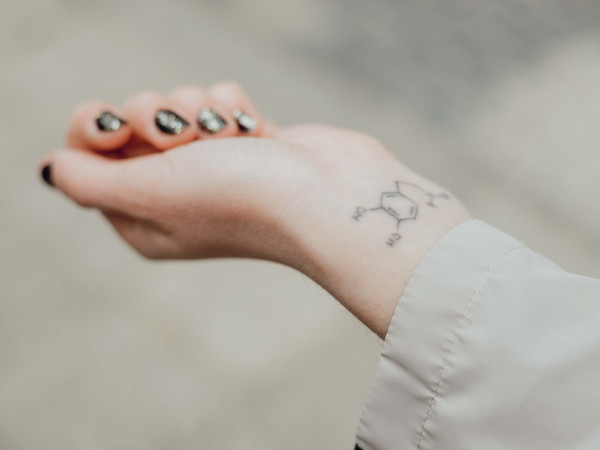
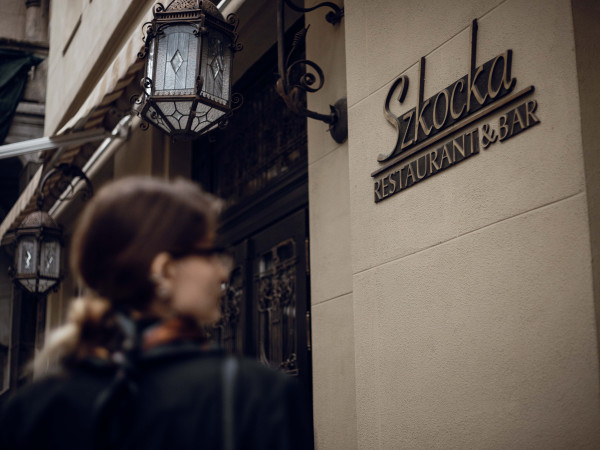
Stop V. Scottish coffee shop and paramnesia
Here we come to the Scottish coffee shop. It seems to me this is a bit different from the atmosphere, from which we began our journey when we talked about Banach and the whole Lviv math party in general. There should be a copy of this Scottish book, where mathematicians wrote down their different problems. I don't know if this book is really there, but I would like to run in there and ask if it is really possible to look through it or look at it under some kind of glass.
In general, this place also inspires me with certain thoughts. Even from the outside. I remember how in this room… Well, how do I remember? I can't remember, because I didn't live in that period, and I don't have so much data to immerse myself in that environment as plausibly as possible, but to me, all these places feel like some kind of flashbacks. Somewhere I heard something about this space or the one we went to before – somewhere I heard, somewhere I imagined, somewhere I interpreted in my own way, I fantasized. For example, the atmosphere of such a bit of scientific hooliganism is recreated here; I imagine how all these dudes gathered here and got drunk, solving their tasks until the morning. When I write my lyrics, even very serious ones, I like to turn on the disco ball in the room and shine with bizarre colored lamps.
So it's no wonder that mathematicians could hang out here, or work their brains out.
In general, Lviv and I have slightly similar characters, or I read only those details of it that are convenient to me, but it's more the language that the city speaks to me, in general, it speaks different languages.
Address: 27 Shevchenka St
Interview and text – Yuriy Zaremba
Video – Oleh Zvarych
Photo – Halyna Kuchmanych
Idea and curation – Oleksiy Fedak
